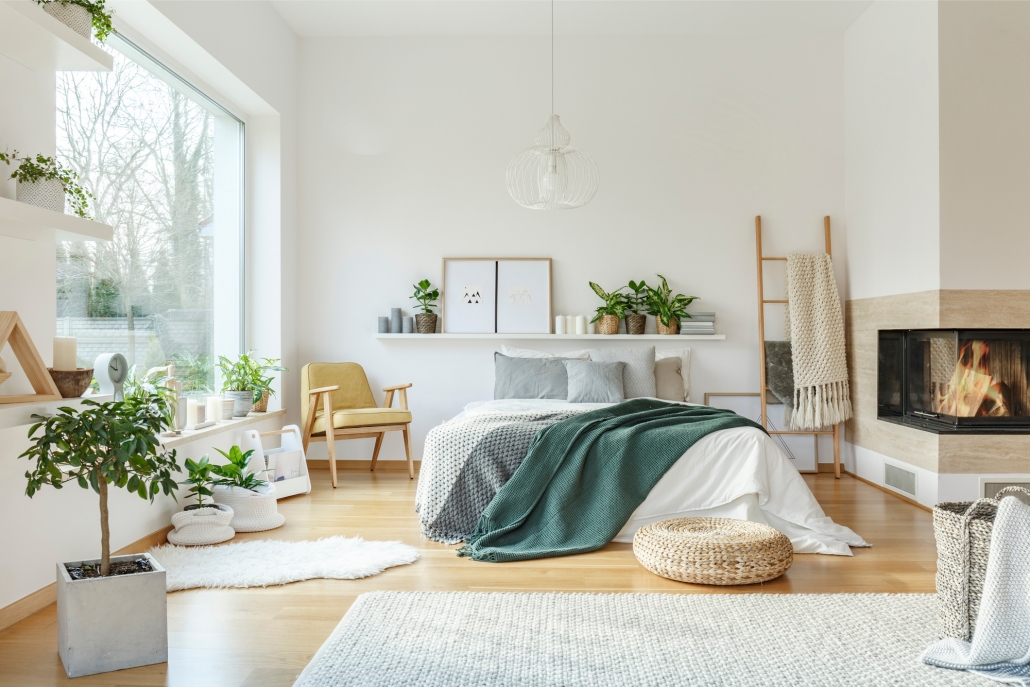How To Design The Perfect Bedroom For Rest And Sleep
How To Design The Perfect Bedroom For Rest And Sleep
Your bedroom is more than just a room – it’s your body’s place of refuge, tranquillity and rejuvenation. Thus, designing the perfect bedroom isn’t just about aesthetics; it’s about crafting an environment that cradles you in comfort, nurtures your well-being, and promotes better rest and sleep. Remember, your bedroom plays a pivotal role in ensuring you get a restful night’s sleep and wake up ready to tackle the day.
This blog post will enumerate some tips and strategies to help you create an ideal sleeping environment.
1. Prioritize comfortable bedding
Investing in comfortable bedding is a must for designing a bedroom that promotes quality sleep. Select a mattress that supports your body and a pillow that fits your common sleeping position. High-quality, breathable sheets made from natural materials like cotton or linen also contribute to a more comfortable and restful night.
2. Select a sturdy and supportive bedframe
When choosing a bedframe, opt for a sturdy and supportive option. High-quality queen bedframes and other appropriate bedframe sizes can provide the necessary support for your mattress and promote proper spinal alignment, enhancing the comfort and quality of your sleep. Look for bedframes made from durable materials such as solid wood or metal, and ensure they are built to withstand regular use. Additionally, consider the bed frame height to ensure it is suitable for easy accessibility and getting in and out of bed comfortably.
3. Select calming colours and tones

The choice of colours in your bedroom can profoundly affect your mood and sleep quality. Opt for soothing hues like soft blues, muted greens, and gentle pastels. These colours foster a serene atmosphere, setting the stage for a peaceful slumber.
Harmonious colour coordination is also essential for a calming atmosphere. Stick to two or three main colours that complement each other. Subdued tones such as gentle greys, soft creams, and muted earth tones work cohesively to create a peaceful space.
4. Manage lighting effectively
Proper lighting is crucial for creating an environment conducive to sleep. Incorporate a mix of lighting options, including ambient, task, and accent lighting. Managing lighting effectively requires consideration of both functionality and ambience. By creating a lighting scheme that respects your body’s circadian rhythm and promotes relaxation, you set the stage for a seamless transition from wakefulness to peaceful slumber
5. Banish clutter
A clutter-free bedroom promotes a clear mind and better sleep. Embrace organization by minimizing visible clutter and utilizing storage solutions to keep extra items out of sight. An uncluttered space reduces stress and makes it easier to wind down before bedtime.
6. Bring in natural elements
Incorporating elements of nature into your bedroom design can have a calming effect. You can add flowers or indoor plants to improve air quality and lend a touch of tranquillity. Wood accents and natural textures further contribute to a soothing aesthetic.
7. Design for minimal distractions
Your bedroom should be a sanctuary free from distractions that disrupt your sleep. Keep electronic devices and other technology out of the bedroom, creating an atmosphere that promotes relaxation and mindfulness instead. Avoid screens and gadgets emitting blue light that can disrupt your sleep-wake cycle. Instead, engage in calming activities like reading, meditation, or light stretches before bedtime.
8. Craft a personal retreat
Your bedroom is your personal oasis – a place to escape the world’s demands. Infuse elements that bring you joy, like artwork, photographs, or mementos. Personalize the space as much as you want but ensure to maintain a sense of tranquillity.
9. Balance soft furnishings
Achieve a balance of soft furnishings to create an inviting and cosy ambience. Add plush rugs for warmth and comfort underfoot and incorporate cushions or throw blankets onto your bed or seating area. These additions enhance both comfort and aesthetics.
10, Optimize air circulation
Proper air circulation is crucial for a comfy sleep environment. Ensure your bedroom is well-ventilated by opening windows whenever possible or using a fan to promote air movement. Fresh air contributes to a better night’s sleep.
11. Design a relaxing reading nook
For those who enjoy reading before bedtime, a dedicated reading nook can enhance your sleep experience. Choose a cozy chair or chaise lounge and complement it with soft lighting. This space becomes your tranquil corner for unwinding before sleep.
12. Invest in quality window treatments
Window treatments serve both aesthetic and functional purposes. If you live in an area with streetlights or are a light-sensitive sleeper, blackout curtains are your allies. These heavy-duty drapes effectively block out external light sources, creating a cocoon of darkness that enhances sleep quality. Blinds also offer a flexible way to control the amount of light that enters your bedroom. Venetian blinds, for example, can be adjusted to filter light at various angles. This provides the freedom to customize your sleep environment according to your preferences.
Ultimately, investing in quality window treatments adds a touch of elegance to your decor and helps create an optimal sleep environment that supports your restful slumber.
Wrap up
Designing the perfect bedroom for rest and sleep involves careful consideration of various elements, each contributing to your overall well-being. With these tips, you set the stage for rejuvenating sleep. A clutter-free space, free from distractions, further enhances your sleep environment. Ultimately, the effort you invest in designing a sleep-conducive space will reward you with improved sleep quality and a healthier, more rested you.




